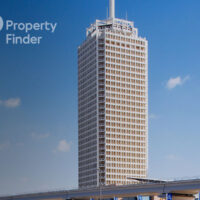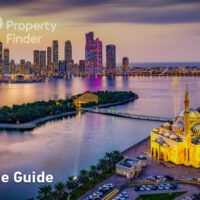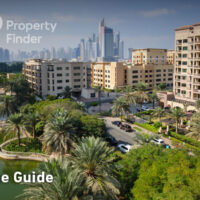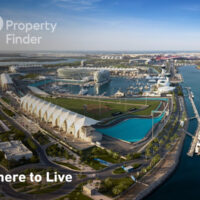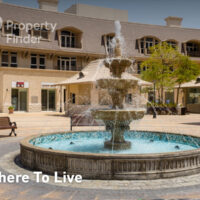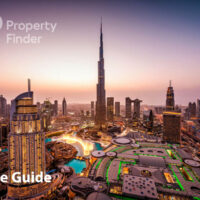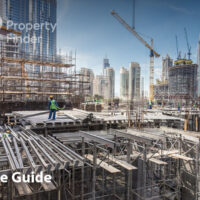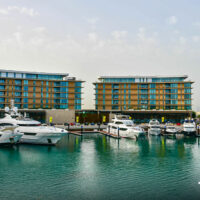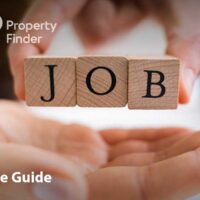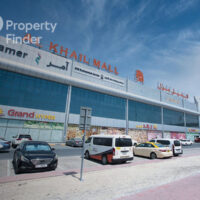Consolidation in the real estate industry is gaining momentum and will shape the market in the years ahead, predicts Abdullah Alajaji, Managing Director of Driven Properties
 This is an interesting time in the UAE property market cycle. While supply and demand dynamics changed over the past 24 months, transaction activity remained buoyant. However, now the game has changed and off-plan properties make up the vast majority of property transactions. Real estate developers are now competing on prices, payment plan options, and most recently, very attractive commissions to partner agencies.
This is an interesting time in the UAE property market cycle. While supply and demand dynamics changed over the past 24 months, transaction activity remained buoyant. However, now the game has changed and off-plan properties make up the vast majority of property transactions. Real estate developers are now competing on prices, payment plan options, and most recently, very attractive commissions to partner agencies.
Over the past year, Emaar Properties got creative with payment plans, extending for up to two years after completion. Meraas is offering up to three years post-handover payment plans on properties near completion, including plots. Playing another angle, Dubai Properties offers a four per cent waiver on Dubai Land Department fees – while many other developers are now making the two per cent commission a thing of the past, with the rate going up to almost six per cent.
Feeling the pinch, smaller developers offered payment plans extending to ten years post-handover. Bank financing, albeit available, is becoming more expensive and more difficult to attain. Financial institutions are now more selective and valuation of properties tend to favour banks, with property valuations coming lower than agreed prices much of the time.
First-time buyers are now ever so careful when buying, especially having countless options across the city, new supply coming, and sellers becoming more flexible. Based on our data, the bid and ask spreads have tightened after a long period where high spreads continued to perplex real estate agents. Sitting at 4.4 per cent in 2013, the spread between first bid and offer hit 11.6 per cent in 2016 and dipped back down to 7.3 per cent in 2017.
These trends above are not so surprising, considering the number of new handovers and properties nearing completion. New noteworthy scheme completions in the apartment space include City Walk, Polo Residence in Meydan, The Address The Boulevard, Nikki Beach Residences, Dubai Wharf, and Five Palm. And there are more on the way, with various remarkable developments nearing completion like Bulgari Residences, Bluewaters Island, Habtoor City, The Hills in Emirates Living, Alef Residence, Burj Vista, and The Address Residences Fountain Views. When it comes to villa communities, new completions include District One in MBR City, Millennium Estates, Polo Townhouses, Akoya by Damac, Town Square, Mira, Jumeirah Park (new phase), Jumeirah Islands Townhouses, Living Legends, and Arabian Ranches II.
These trends above are characteristics of a mature market and one that is ripe for consolidation at all levels. We have already seen a mega-merger at the developer level with Aldar and Sorouh of Abu Dhabi back in 2013, and another merger is in the cards between Eshraq and Reem Investments to create the second largest developer in the UAE capital. And soon Dubai developers will find that they can do better as one. A potential merger between two of the ve largest developers will immediately create a giant, possibly making it the largest developer in the city.
We have seen the performance of property developers’ stocks dip in recent months in anticipation of potential consolidation. Emaar saw its newly listed development arm, Emaar Developments, dip by as much as 15 per cent since listing in November while competitor Damac Properties has lost 20 per cent of its value since July. At the same time, we have seen a pause in new launches from other mega-developers, such as Dubai Properties and Meraas.
Consolidation in the financial sector has already started the merger between National Bank of Abu Dhabi (NBAD) and First Gulf Bank (FGB), creating the largest bank in the Middle East: First Abu Dhabi Bank (FAB). Following suit, Bank of Sharjah and Invest Bank are looking to complete a merger before year end. Interestingly enough, this has trickled down to real estate agencies.
The trend started with ve property agencies creating what is now called One Broker Group. Two other acquisitions made the news when Gulf Sotheby’s acquired the likes of ERE Homes and SPF Realty. While these mergers and acquisitions may be strategic in nature, it is clear that the market is fragmented and there is simply no room for smaller players to operate. In an industry where barriers to entry are very low and economic moats are very difficult to establish, consolidation is one way to grow your business and continue to expand market share. The only other way to stay competitive is to innovate, and with innovation, you can establish economic moats. This means you would have to have cutting-edge technologies, patents, as well as cost advantages and ef client scale that make you better and more profitable than your competition.
Based on expert data, we expect the size of the real estate brokerage market to be in the range of AED 3 to 4 billion.
We have used the following assumptions and facts to derive our definition of market size. In 2017, off plan transactions constitute 67.1 per cent of all property transactions with secondary market transactions at around 32.9 per cent. Half of those off plan property transactions are between the developer and investor directly with no intermediaries. If there are brokers involved, the estimated average fee paid by developers to brokers over the year is at 2.5per cent for off-plan projects and 2per cent of the purchase value for ready (secondary) market transactions. This excludes mortgage registrations, which are registered as transactions in Dubai Land Department figures. In our calculations, we annualized the AED 72 billion recorded in H1 of 2017 (DLD data) to arrive at AED 142 billion in total value for one year. While no data is available, we assumed that fees from leasing activity constitute 25per cent of the overall market size, based on internal estimates.
Running the numbers above gives us an estimate of the size of the market, in which 2,500 agencies and over 6,000 brokers operate. By the looks of it, this is a US $1 billion market.
Problem? Absolutely. The market cannot grow much larger overnight, but the game will change. With consolidation in all industries related to the real estate space, we will see an even more mature market as well as happier market participants.
The more fluid model will have to unleash new entrepreneurs that can innovate and really change the market. As food for thought, let’s look at the two examples of UK-based property brokerages. Founded in 1981, Foxtons is an archetype of the traditional model, with 1,337 employees and a market cap of GBP 200 million. On the other hand, its innovative competitor Purplebricks was founded five years ago and now has just 239 employees and a market cap of GBP 1 billion.
It is time for the UAE’s market players to take heed of what’s happening in the global market. There will be new big players and smaller players with a sound business model who will use market forces in their favour to grow. Using innovation to grow any business in any industry is an excellent way forward; the other option is consolidation.

EDUCATION MBA, London Business School
HIS WORDS We are always reminded that real estate can go through cycles, but in the long-term real estate investors will generate excellent returns. We have a famous Arabic saying in the GCC about real estate: ”The property market can get sick, but will never die.”
–
This article has additionally been published in the January/February issue of Prestige 2018 – read the full magazine
–
Are you Propertyfinder’s client? Would you like to feature on our Blog? Apply now



